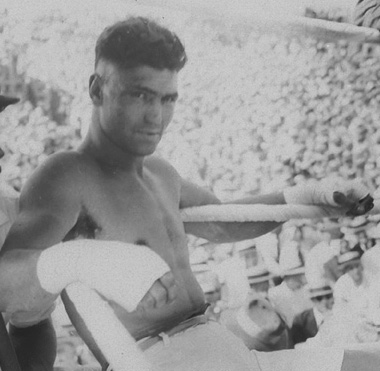Jack Dempsey, also known as the Manassa Mauler, remains one of the best boxers in history. Lauded for his ferocity in the ring, bone breaking punching power and swift speed, he brought about a new age in boxing. Every boxer after Dempsey, from Joe Louis to Vitali Klitischko, would adopt this brawler’s style of combination punching, bouncing footwork, and pressure fighting. When you look at modern boxing, with its rapid combinations and close quarters brawling, those styles evolved from this tough as nails champion.
As Joseph Durso states in the autobiography “Dempsey“:
“When Johnny came marching home from World War 1, he marched straight into the era of wonderful nonsense that came to be known as the Roaring Twenties. Th[is] wild applause of the Roaring Twenties lingers in echoes today, it lingers over all the sporting titans who symbolized the whole mood. Babe Ruth… John McGraw… Bill Tilden… Red Grange… but the preformer who captured the public’s fancy in the most basic way was Jack Dempsey. He started to capture it on the Fourth of July, 1919, when he destroyed Jess Willard and won the heavyweight title – while Johnny came marching home. Tough, hellbent, savage – the right man at the right place at the right time.”
Being born into a life of poverty, Dempsey slugged it out in homeless camps and adopted boxing, eventually winning the world heavyweight boxing championship in 1919. He would remain dominant in the sport until 1926, and would spend the rest of his life conducting philanthropic projects and living a life of comfort. Jack Demspey is the apotheosis of the American Dream and the modern fighter, and this is his story.

“The Dempseys go back a long way.” – Jack Dempsey
In his autobiography Dempsey, the future heavyweight champion of the world writes of his heritage in the rugged mountains of Appalachia. His parents moved west in the 1890’s to escape economic destitution present in the backcountry. Hyrum Dempsey and Mary Dempsey adopted Mormonism, and were described by their son as “intensly religious.” The young Dempsey family put all of their belongings on a wagon, and went out west, as counteless American settlers had done decades prior. Hyrum and Mary settled in Manassa, Colorado, a small mining town.

Jack Dempsey was born on June 24th, 1895, with the original birth name of William Harrison Dempsey (he adopted the name Jack as a stage name for his fights). William Demspey was the 9th of what would become 13 children. When Dempsey was older his family moved again to another mining town, but en route they were trapped on a mountain during a blizzard. Altitude sickness, freezing cold, and hunger took their toll. Escaping down to a train station, Dempsey and his sick mother took a train to Denver to unite with her family to rest, whilst Hyrum and the rest of the children remained on the mountain. It was then Dempsey realized the destitution of their family: “When we lived in a town where all the folks were struggling, I didn’t pay any attention… but here we were the ones who were stuck with out makeshift possessions and paper in our shoes.”
The entire family miracously survived the disaster, and soon made their new home in Montrose Colorado. Jack’s older brother, Bernie was a prizefighter in the little railroad town and showed his younger brother “all there was to know about boxing.” Turning a chicken coop into a gymnasium, the brothers took a cloth bag and stuffed it with sand and sawdust to make a punching bag. Jack recalled: “[Bernie] taught me to chew pine gum, straight from the trees, to strengthen my jaw. Then he would throw a left hook to my jaw. Invariably I would be knocked down. After dusting myself off, I would chew some more. I bathed my face in beef brine to toughen the skin. Eventually my face got tough as a saddle.”
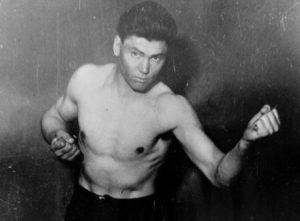
“When I was a young fellow I was knocked down plenty. I wanted to stay down, but I couldn’t. I had to collect the two dollars for winning or go hungry. I had to get up. I was one of those hungry fighters. You could have hit me on the chin with a sledgehammer for five dollars. When you haven’t eaten for two days you’ll understand.”
At the age of 16, upon completing his elementary school education, Jack Dempsey departed his family and began traveling the country with his brother Bernie. Between working in coal mines and fighting in saloons, Jack Dempsey didn’t earn much – other than bruises. Dempsey would walk into saloons in mining or railroad towns and yell out “I can’t sing and I can’t dance, but I can lick any SOB in this house!” The fights would only stop until one fighter couldn’t stay on their feet. A brutal lifestyle like that made Dempsey ruthless in fighting, as the young man was willing to do whatever it took to collect the winner’s purse.
In order to transport himself around the country, Jack hitched rides on freight trains. But because conductors and train workers scoured the passenger cars for tickets and kicked out vagrants in the storage cars, Dempsey would crawl under the train, grip the various pipes and metallic rods and hang on the underbelly of the train whilst it chugged on.
“Sometimes it got real cold underneath the train,” Jack would later recall, “It wasn’t easy, especially when the exhaustion kicked in. When that happened I would tie my hands and feet to the trains lower rungs.”
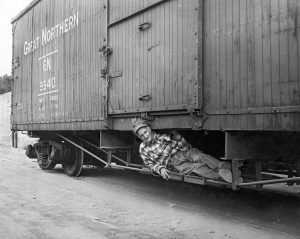
When Jack was in a town looking for work or for a fight, he would live in “hobo” camps on the town’s outskirts. In these homeless camps violence and theft was common, and he would later say that “you had to fight to survive.” Dempsey often went for days without food.
“When I was a young fellow I was knocked down plenty. I wanted to stay down, but I couldn’t. I had to collect the two dollars for winning or go hungry. One fight I was knocked down 7 times, but I got up and won that fight. I had to get up. I was one of those hungry fighters. You could have hit me on the chin with a sledgehammer for five dollars. When you haven’t eaten for two days you’ll understand.”

“Jack Dempsey was not only one of the most exciting heavyweight champions in history he was also one of the ring’s greatest all time pound for pound fighters. Dempsey has one of the best knockout records in history with an unparalleled winning streak of 32-0 with 28 knockouts, including 17 of them in the first round!” – Monte Cox, 1919
Dempsey earned renown in the Western US for his tenacity and speed in the ring. He eventually hitched a ride to New York City for the express purpose of marketing himself as a new heavyweight prospect. Arriving in the city with just 30 dollars, Jack Dempsey lived in squalid apartments and wandered the streets, asking around boxing gyms for a manager or for someone to notice his potential. The size of the city, which in 1916 was 5.6 million people, awed the boy who had only been to small railroad towns throughout his life.
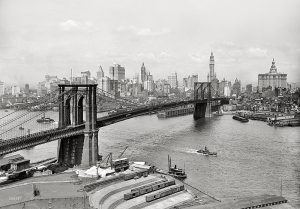
While asking around for fight opportunities, Dempsey was met with rejection. Many of the east coast boxing journalists and managers, who were looking at top notch contenders from the more developed parts of the country, ignored the westerner’s request. One editor remarked “Listen kid, no one here has ever heard of you. Why don’t you just go head back home.”
But Jack perservered. Weighing just 173 pounds, he entered into a boxing match with a fighter who weighed 215 named Andre Anderson. The athletic club owner yelled at Dempsey’s manager, Jack Price. “Price! Where is that SOB? Price! What the hell is the matter with you? I oughta put you in jail for allowing this kid to fight Anderson. Why’ll he’ll get murdered!”
But Dempsey, despite some hard hits from Anderson, would go on to beat Anderson decisively in the later rounds. Whilst sitting on bench in an athletic club, boxing journalist Damon Runyon gave Jack Dempsey the nickname, the Manassa Mauler, after seeing his savagery in the ring against larger opponents.

“[Dempsey] should’ve been the only heavyweight anybody ever thought of when they thought about the greatest heavyweight champion. I mean he had everything. He could punch, he could box. He was mean and determined.”
Dempsey eventually journeyed out west in 1917, and met Doc Kearns, a fighting promoter who saw potential in the small westerner when no one else did. Kearns was convinced that Dempsey had what it took to win the world heavyweight champion, and he sought to refine and sharpen Dempsey’s boxing skills. He financed Dempsey so the fighter wouldn’t have to go hungry, and got him new equipment and sparring partners.
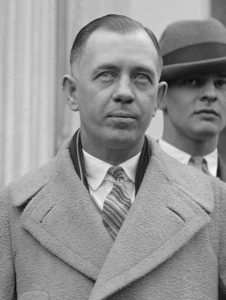
Jack Dempsey’s fighting style was revolutionary for the time. In the early 1900’s, boxers were extremely tentative and ponderous. Their hands laid low to their waists, and they often threw single, heavy blows to each other. Occasionally, they would engage in close quarters action but this would only last for a few moments as both fighters disengaged. This slow form of fighting was necessary, because boxing matches in that time often lasted up to 45 rounds – nearly 3 times the length of modern boxing matches. This form of fighting was still deadly, as boxers often trained to deliver brutal knockout blows, but it was restrained by their physical limitations. Boxing was even seen in some circles as a “gentleman’s sport”. But Dempsey would change that soon enough.
When he fought in bars, saloons, and hobo camps, the Manassa Mauler did what his name suggested: he mauled people. There were no 3 minute boxing rounds, no referees, no time outs in the corners while a knocked down opponent composed himself. There was only endless fighting and beating of fist against flesh. Dempsey took this savage form of combat and took it into his boxing matches, but refined it to fit within boxing’s paremeters. Dempsey did not keep his hands low and throw single, ponderous punches. He threw blows in relentless combinations, and got in close and dealt powerful body and head strikes. Dempsey’s determination and grit, born out of fighting for scraps of food in hobo camps, allowed him to punch with bone breaking power.

The Manassa Mauler revolutionized another aspect of the sport: head and foot movement. Dempsey was known to bob and weave during boxing rounds, moving his head back and forth quickly to frustrate opponents trying to land a blow. When he was close to his opponent, Dempsey would crouch and duck under their attacks. Another new tactic seen in his fight was Jack’s tendency to bounce on his feet. Unlike most other boxers of the period, Dempsey fought on his toes, and rarely fought with his feet flat against the ground. Dempsey would bounce back and forth, allowing him to evade punches but also enabling him to leap forward with his left hook, which was considered extremely devastating.
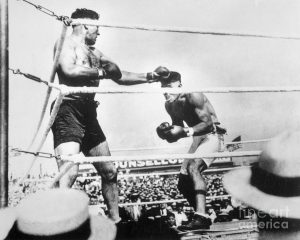
These new ring strategies culminated in one of the most exciting and brutal techniques in history: the Dempsey Roll. David Christian, fight analyst and combat sports expert, describes it “The Dempsey Roll was not one move, but a combination of punches built of Dempsey’s unorthodox techniques, that happened to result in one of the most beautiful knockdowns ever recorded on film.”
Dempsey would open this movement with a punch, usually a hook of some kind. With his opponent moved by the force of the punch, Dempsey would lean forward on one foot and then hit his opponent with his other fist, and use gravity to strengthen his punches as he “fell” on his opponent. This use of his own body movement, footwork and gravity increased Dempsey’s punching power incredibly. Dempsey would also stretch his arm back greatly, and then lash it forward, essentially using his bicep as a rubber band.
David Christian summarizes Dempsey as a fighter: “Dempsey was the rarest of fighters; a dangerous combination of unrelenting aggression and sophisticated ring-craft.”
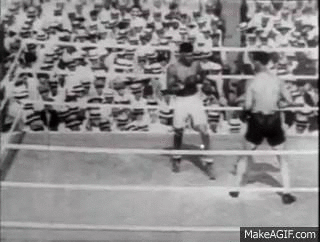
Legendary trainer Ray Arcel, who trained Larry Holmes and Ezzard Charles among 18 world champions, said of Dempsey: “[Dempsey] should’ve been the only heavyweight anybody ever thought of when they thought about the greatest heavyweight champion. I mean he had everything. He could punch, he could box. He was mean and determined.”
Kearns, a former boxer himself, was supremely confident in Dempsey’s ability. When talking with reporters about a future match with his young protege, Kearns openly stated that he would bet 10,000 dollars on Dempsey – even though the pair lacked the money. “It’s great publicity for us,” Doc Kearns told Dempsey. And it was. Dempsey, with his bobbing and weaving style of swarming, demolished top heavyweight contenders. Dempsey’s unrivalved punching power earned him several first round knockouts, and his style excited the crowds greatly. By 1918, Dempsey was in a position to challenge then Champion Jess Willard to a title fight, but Willard declined and avoided fighting Dempsey.

Eventually, boxing promoters like Tex Rickard persusaded Jess Willard to fight Jack Dempsey with an offer of $75,000, in Toledo Ohio on July 4th, 1919. Jack would later recall how nervous he was before the fight, with temperatures soaring above 104 degrees and the crowd reaching around 50,000. Jess Willard, despite being 37 years old compared to the 24 year old Dempsey, was the 5-4 betting favorite for the championship bout. Willard was so sure of victory he even approached Doc Kearns and asked him for legal immunity if he killed Dempsey in the ring. Doc Kearns had enough, chastising Willard and telling him he a bet on Dempsey winning in the first round.
Willard represented the old style of boxing – he was strong and powerful but extremely slow. He had an excellent right hand (even killing a boxing opponent in 1909) but was tentative in the ring. Compared to Dempsey, who was likened to a panther, Willard was an elephant, large and powerful but clumsy and old, a fighter who was clearly past his prime.

Willard weighed 245 pounds, and was 6’6″ compared to his much smaller opponent, who was 187 pounds and 6’6″. Willard commented to his corner before the bout: “This will be the easiest fight of my life.” Dempsey confides in his autobiography that “I was downright scared.” But when the bell rang, Willard was in for the most savage title fight in the history of boxing.
“Look at the heavyweight Champion of the World! His face is pounded almost to a pulp! His tired, dazed eyes peer through a mask of blood. It’s dripped down over his body, stained his trunks, spotted his legs! Even Dempsey is smeared with the sanguinary fluid!” – Ollie Pecord.
The bell rang for the first round. Dempsey and Willard circled each other, with Dempsey advancing steadily and ducking other Willard’s punches. Towards the middle of the first round, Dempsey ducked under a light jab from Willard, and slammed the towering champion with a left hook, wobbling Willard. As the giant tumbled, Dempsey shifted his pressure on his right foot, and then threw a right hook. Dempsey followed up with a devastating left hook, and Willard tumbled down and fell. “A look of amazement came upon Willard’s face,” Dempsey would later recall.
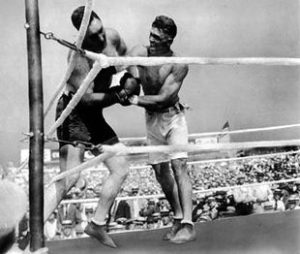
The next minute or so would see Dempsey knock down Willard 10 more times. Willard was so weak that Dempsey was openly swatting his hands away, throwing brutal punches at Willard’s face that sent the massive champion hitting the floor. In today’s boxing, the match would have been halted due to the tremendous beat down Willard was suffering. But back in 1919, fights continued as long as both fighters could stand on their feet. So Willard endured terrible punishment.

In Rounds 2 and 3, Willard stayed on his feet but was irreversibly damaged from the slaughter in the round before. Commentator Allie Pecord exclaimed: “Look at the heavyweight Champion of the World! His face is pounded almost to a pulp! His tired, dazed eyes peer through a mask of blood. It’s dripped down over his body, stained his trunks, spotted his legs! Even Dempsey is smeared with the sanguinary fluid!”
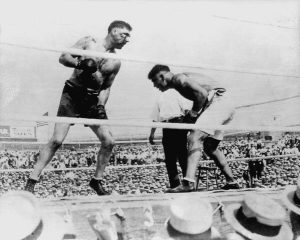
When Willard could not rise from his corner in Round 4, his corner threw in the towel. The Manassa mauler had broken Willard’s cheekbone, lacerated his face with cuts on the eyes and lips, and badly bruised his ribs. Jack Dempsey was now heavyweight champion of the world.
“At his peak Jack Dempsey was the most dynamic and devastating heavyweight this commentator has ever seen…Manassa Jack had speed, strength, better than average boxing skills, lusty punching power and a blazing spirit.”
Jack Dempsey would go on to change boxing even more as heavyweight champion. He turned boxing into an entertainment extravaganza, having stadiums built just for his boxing matches. His manager Jack Kearns and promoter Tex Rickard promoted Jack’s widly entertaining fighting style to crowds, who were eager to see a rough necked champion clean the clocks of renowned boxers throught the US. And in the Roaring 20’s, with the economy booming and hopes high for a new future, sport stars like Dempsey, Ruth, and ‘Red’ Grange were idolized and saw massive followings. Dempsey’s team drew in the first million dollar boxing gate and Dempsey became a movie actor, promoting his image and drawing more fans to his matches.
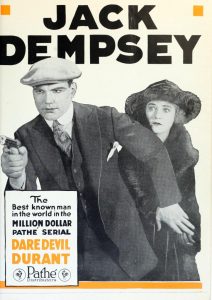
Dempsey would go on to defend his title 6 times from 1919 to 1926, where he regularly drew in crowds of up to 120,000 spectators. His ferocity and fighting style remained unchanged, and he defeated excellent boxers like Tommy Gibbons, Luis Firpo, and Billy Miske. During a title bout against French boxer Georges Carpentier, Dempsey threw a ferocious 21 punches in 35 seconds, knocking out Carpentier for good.
“Dempsey is the greatest fighter I have ever seen. He hits twice as hard as Jim Jeffries and is as fast in the ring as James J. Corbett.” – quoted boxer Sam Langford.
“At his peak Jack Dempsey was the most dynamic and devastating heavyweight this commentator has ever seen…” Jersey Jones, a popular fight commentator remarked. “Manassa Jack had speed, strength, better than average boxing skills, lusty punching power and a blazing spirit. His bobbing and weaving style made him a difficult target to hit solidly, but when he was, he had the “ruggedness” to take it. Lithe as a panther and just as savage, Dempsey packed one of the most powerful punching combinations in the game…”
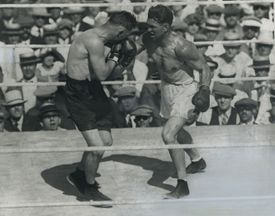
During a title defense against Luis Firpo, an Argentinian giant nicknamed “The Wild Bull of the Pampas,” who weighed at 216 pounds, the Manassa Mauler was knocked down in the first round by a hard right hand from Firpo. Dempsey, clearly enraged, knocked down Firpo 7 times in the span of the first round, opening up cuts on the Argentinian’s face and shocking the crowd of 80,000. Firpo, using his weight advantage pushed Dempsey back towards the end of the 1st round and threw a crushing right cross to Dempsey, sending the champion flying through the ropes. Dempsey got out of the ring in 14 seconds, and in the second round knocked down Firpo twice for a knockout victory.
After the bout, Firpo had just this to say: “He is a throwback to the days of cavemen.”
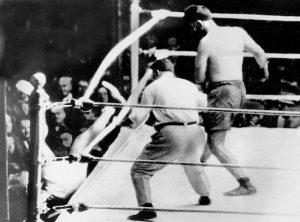
Despite this popularity, Dempsey was not completely free from criticism. He took 3 years off from boxing after fighting Luis Firpo, and didn’t give Gene Tunney, a top heavyweight contender, a chance at the title. Dempsey also drew the color line, refusing to fight black boxers whilst he was champion. In his autobiography, Dempsey lists a number of excuses, saying that Harry Wills (a prominent black boxer in the 1920’s) wouldn’t offer up the money to pay for a title fight. Dempsey also says that his wife, Estelle Taylor, encouraged him not to fight Wills. But it’s also likely that Dempsey was feeling pressured from boxing commissions and the public (who were strictly opposed to a black boxer winning the heavyweight championship) to reject Will’s requests for a title bout.
“Honey I forgot to duck.”
In 1926, Dempsey would fight top heavyweight contender Gene Tunney. After neglecting to properly train and prepare for the fight (spending his time in movies), Dempsey was seriously out of shape and had lost his ferocity and speed. Dempsey was thoroughly out boxed by Tunney and lost his championship belt through decision by points. When his wife Estelle Taylor asked what happened, Dempsey jested, “Honey I forgot to duck.”
In a rematch with Tunney a year later, Dempsey would fight Tunney again. In the early rounds Tunney dominated, outpacing Dempsey who found it difficult to catch up to the younger fighter. But Dempsey caught up to Tunney in Round 7, knocking Tunney down for 14 seconds. But Dempsey squandered this opportunity by standing over Tunney, preventing the referee from counting Tunney out. The referee ordered Dempsey to move to the corner, and when he resumed the count Tunney was up and boxing again. This “Long Count” has been considered by many to be one of the greatest moments in sports history.
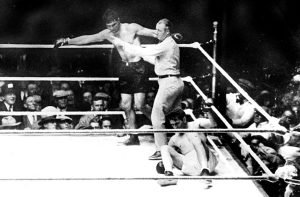
For the rest of the fight, Dempsey was out boxed and was even knocked down in Round 8. Dempsey lost the fight on points, and eventually retired soon after. The Manassa Mauler’s career was over, but he felt fulfilled at his success, and entered into a series of philanthropic projects. He would enlist in the Coast Guard during WW2, and open up a restaurant in New York City named after his family surname.
Jack Dempsey, the Manassa Mauler radically transformed the sport of boxing. After Dempsey’s reign as heavyweight champion, boxers utilized his bobbing and weaving techniques and swarming style. Sugar Ray Robinson, considered by many to be the greatest Pound for Pound boxing champion of all time, took lessons from Dempsey’s bouncing footwork. Rocky Marciano would utilize Dempsey’s bobbing and weaving to crouch under his opponent’s jabs. And Dempsey’s rugged good looks, exciting fighting style and canny promoting made him a sports superstar, a legacy that would permeate throughout the years.
William Harrison Dempsey, one of the best world heavyweight champions of the world, would die at the age of 87 in May 31st, 1983 from heart failure. He is buried in New York City. His gravestone is a simple marker in the ground, a simple gravestone commemorating a man from humble backgrounds who would go on to shake the world.
Sources:
Dempsey, Jack. Dempsey. Harper and Row Publishers, 1977.


